Behind the Lens: Exclusive Interview with Andrew Catlin
Behind the Lens: Andrew Catlin
by Francesca Odell
This month’s photographer hails from England and is an absolute powerhouse with years and years of captivating photography under his belt. There’s not just photography; however; Andrew Catlin is also a director, cinematographer, psychology graduate, and an all-around award-winning artist.
Click here to visit his website where you can see prints and books for sale (some available on Amazon).
Andrew has also worked with Soundgarden in the past, producing memorable photographs many of us have seen ripped onto Pinterest, Instagram, and other media platforms without any photo credit. We’re happy to put a face and name to those photos as some have been in wide circulation since the late 90s when we were still cutting pictures out of zines and posters. Time to give credit where credit is due!
We were lucky enough and very thankful to get an interview with Andrew where he discusses his previous work with the band, as well as some wise words for aspiring photographers. As an added bonus, he also shared some exclusive photos!
1. Do you have any specific memories you’d like to share from your experiences with photographing Soundgarden?
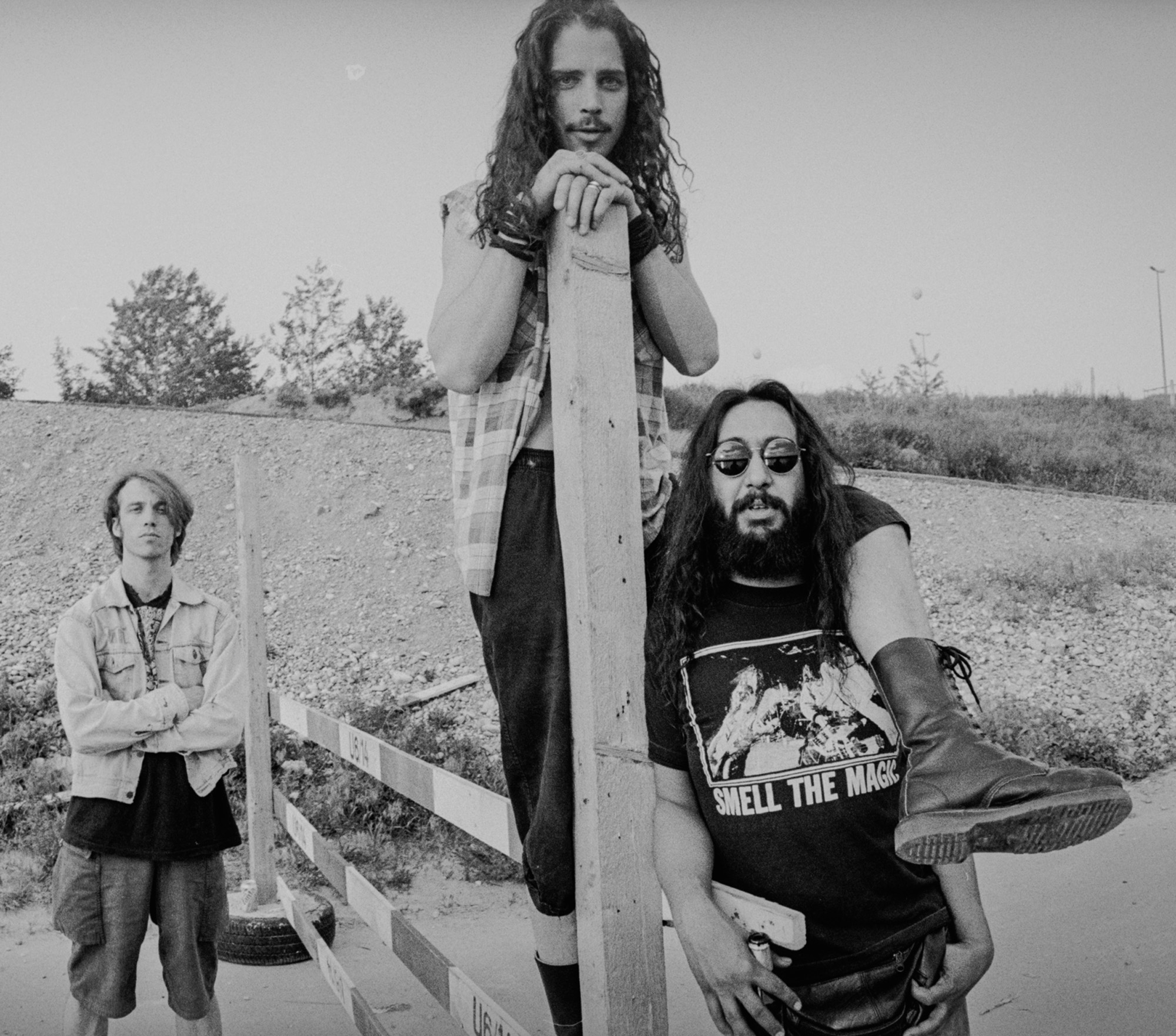
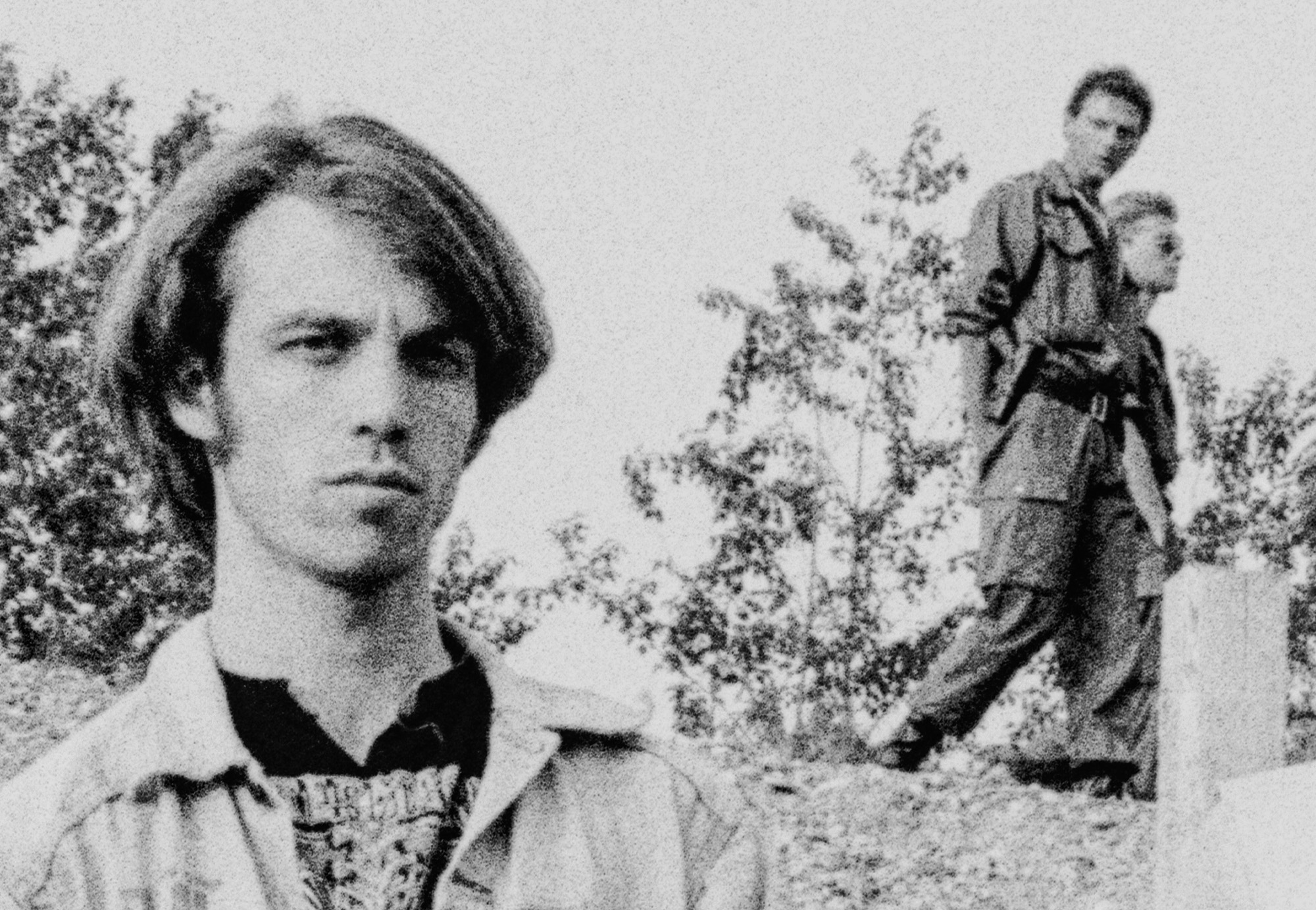
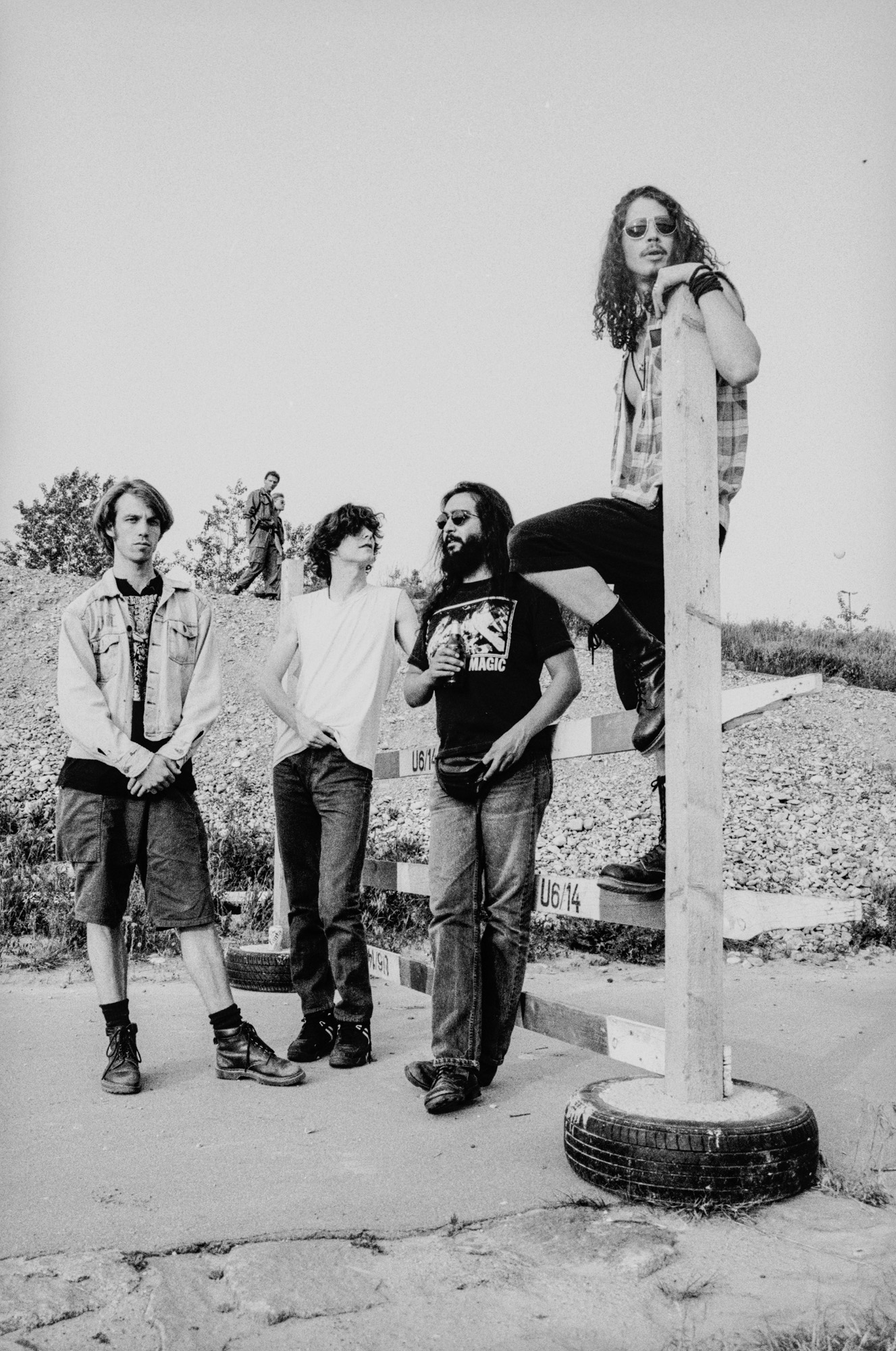
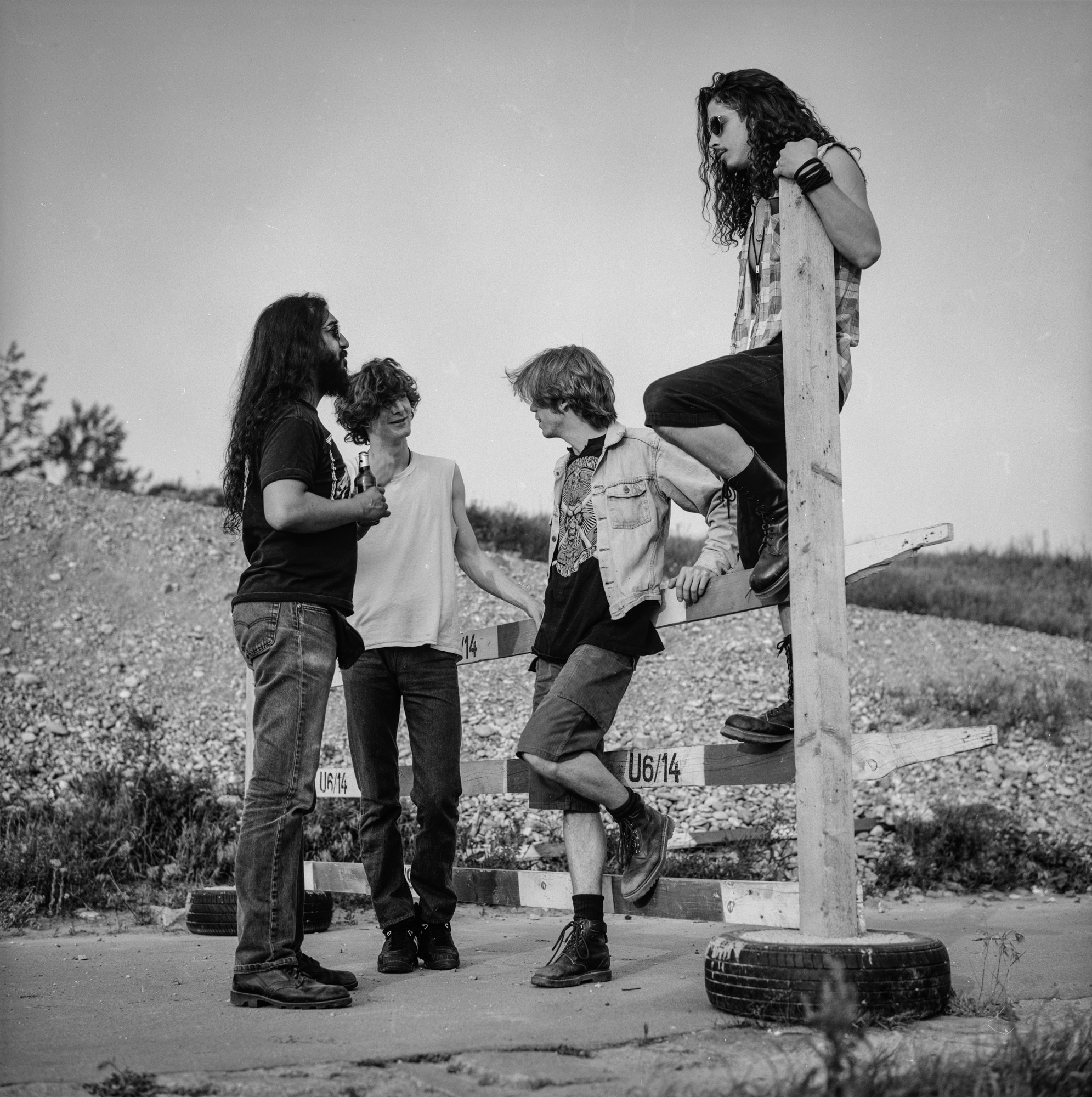
These pictures were taken over a couple of days on tour while Soundgarden were supporting Guns’n’Roses. I was with them for concerts in Budapest and Vienna.
Although the two cities sit a short journey from each other, both on the river Danube, they were a world apart. Hungary had been part of the Eastern Bloc, effectively a satellite of the Soviet Union, until the end of 1989, so was barely two years into democracy, and the concert was overseen by large numbers heavily armed police with water cannons and military vehicles – presumably to protect against any revolutionary mood in the crowd of skinny young rebels, dressed in GNR uniforms (bandanas, kilts, t-shirts – the whole catastrophe). This would have been one of the first major rock’n’roll concerts in the country, so it was a very new experience for both the audience and the bands. When the show started, most of the audience had no idea who Soundgarden were. By the end of the short half hour support set, they wouldn’t ever forget them. It was a powerful atmosphere.
By contrast, Vienna in Austria is a city that has been a very wealthy bourgeoise political and cultural centre for centuries. Beethoven, Motzart and Freud all lived there. You could quantify a huge difference just by measuring the average body mass index of people in the two audiences.
The Viennese started out disinterested, expecting nothing much from the support act, more focused on pouring beer into their faces. Nevertheless, a blistering performance soon changed that, and the roar of sound quickly convinced them to pay attention and join in.
2. How were some of the shoot locations with the band decided? Did you collaborate with them, or did you have a vision in mind ahead of time?
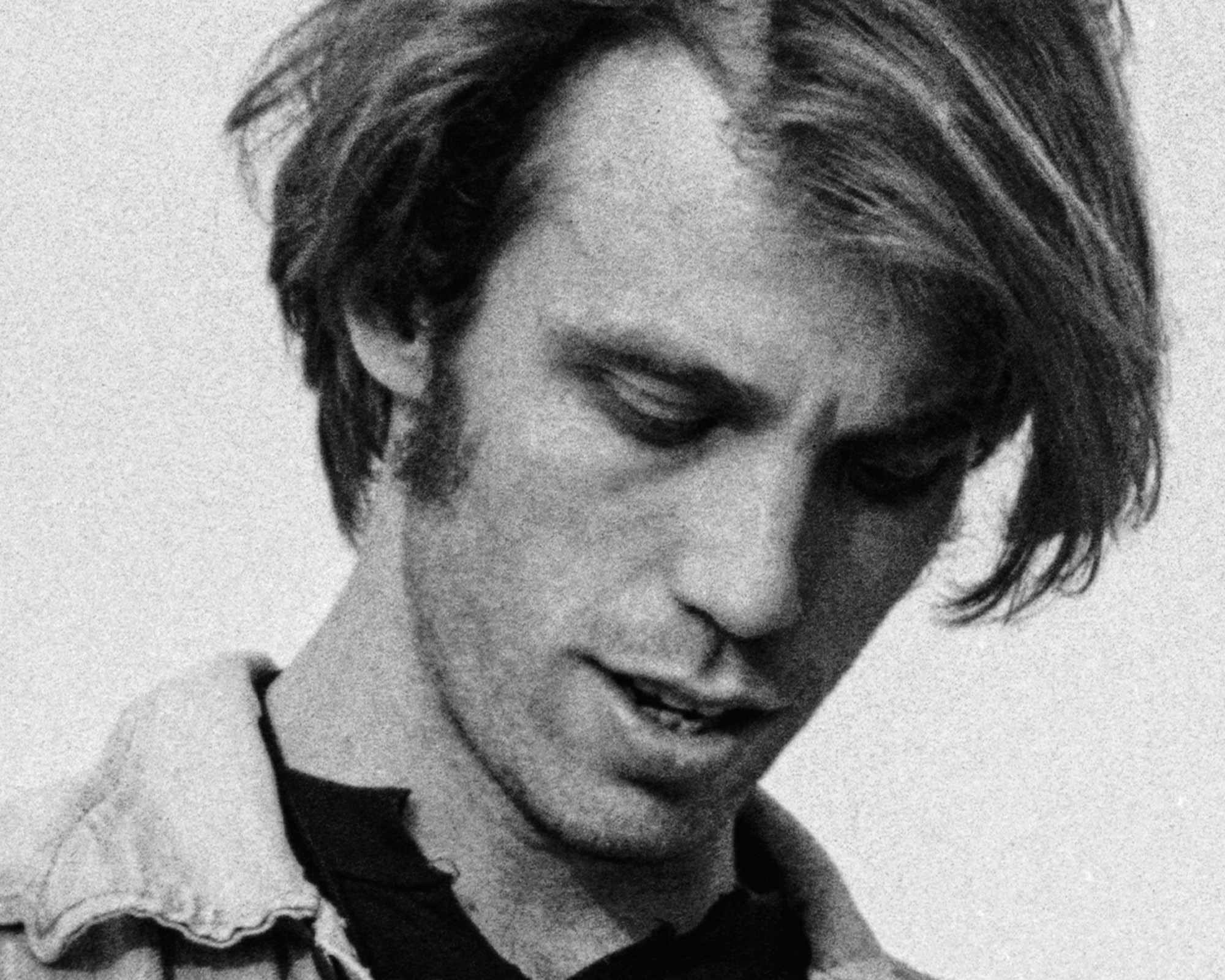
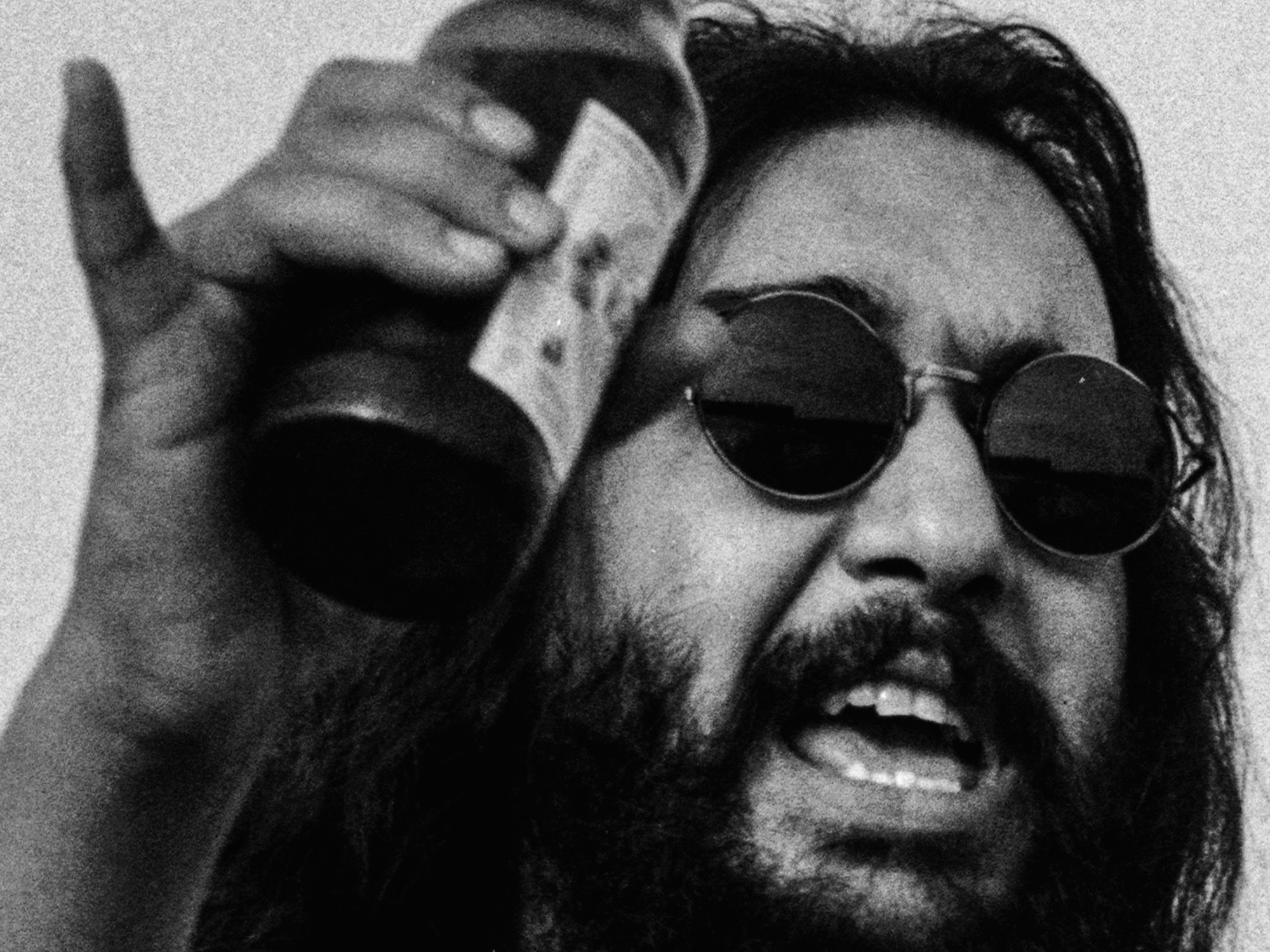
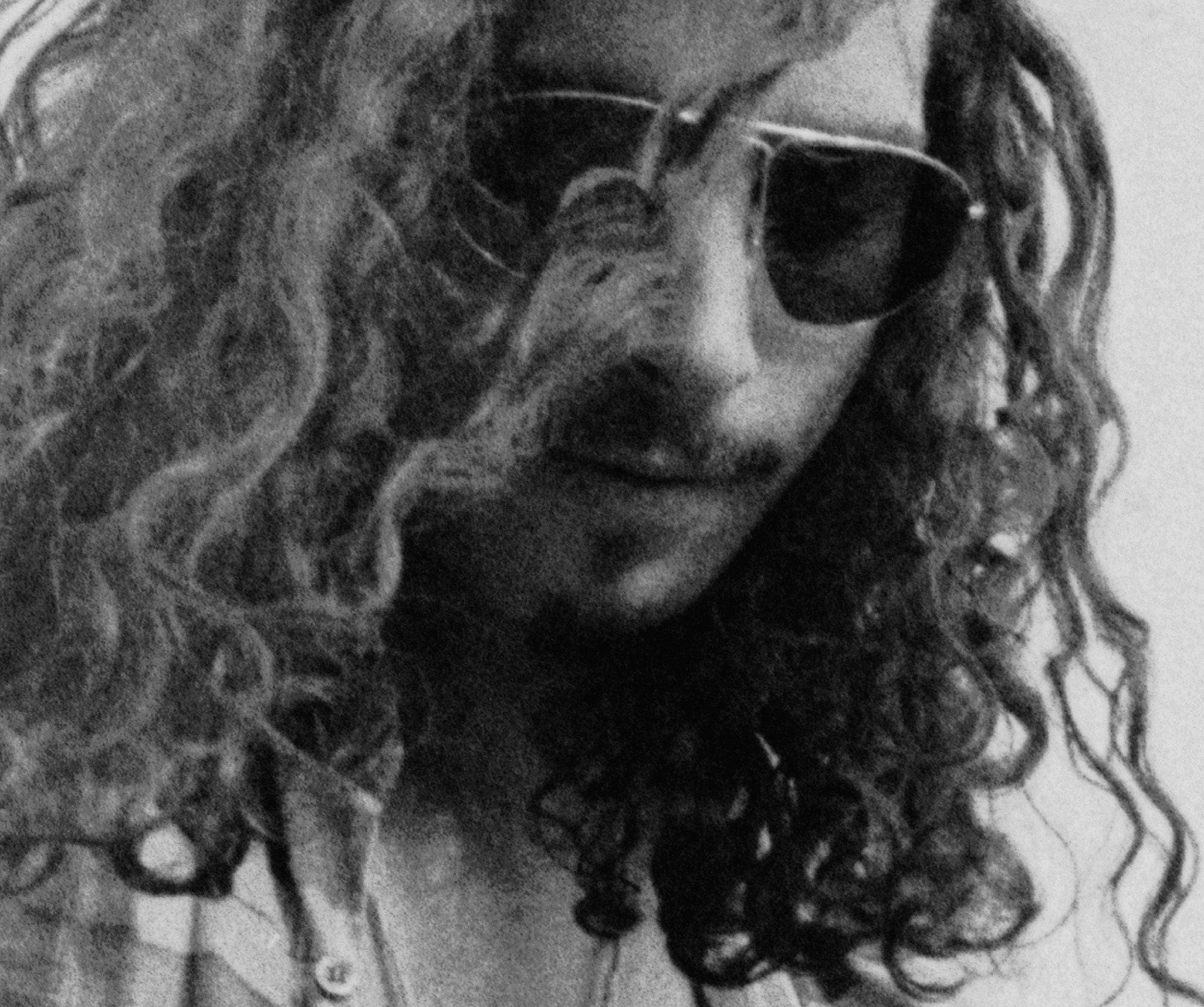
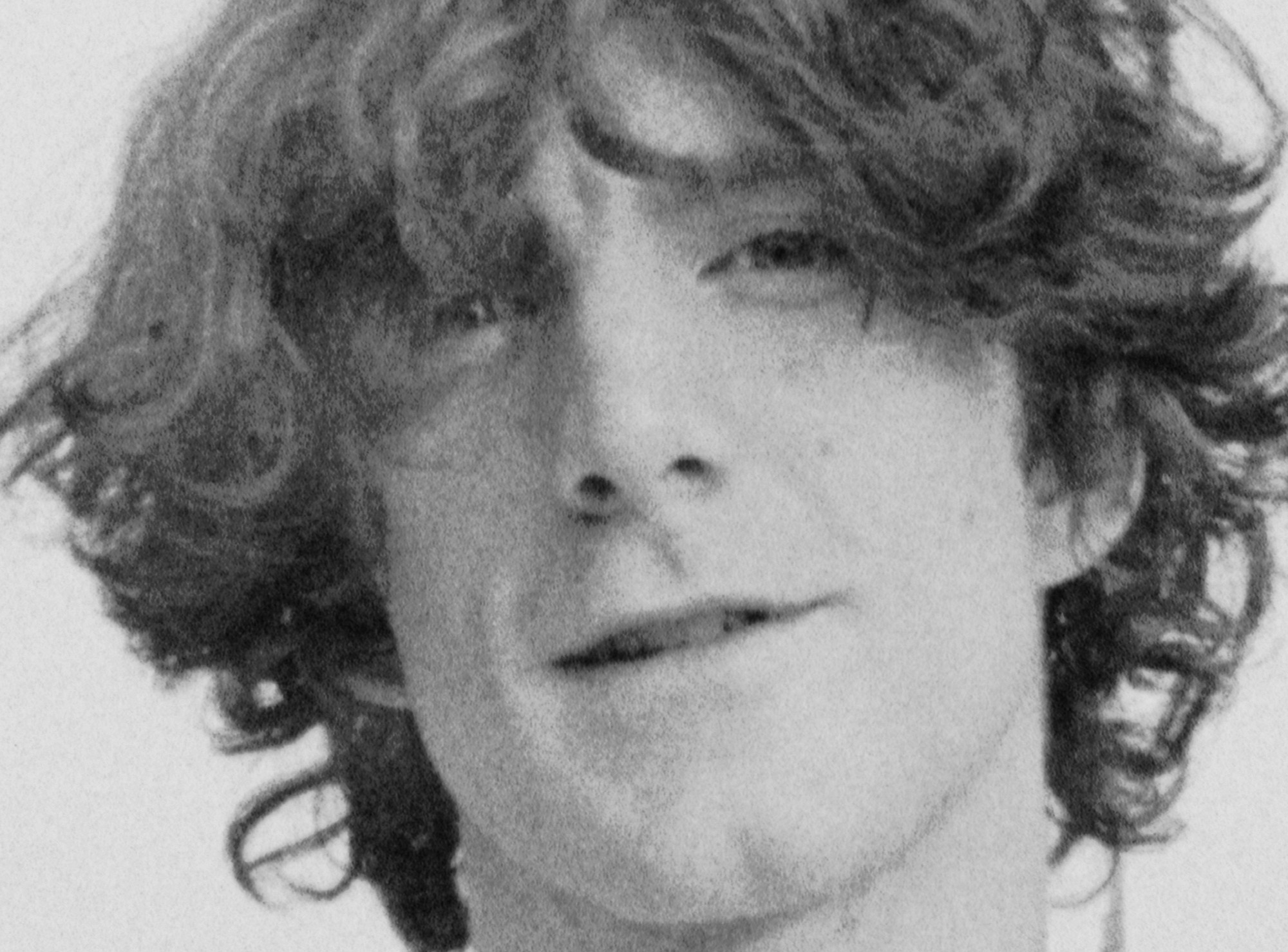
The locations were fairly random. We grabbed time where we could during the two days. Generally, this meant taking a short walk and reacting quickly to what we found. We did the portraits in the hotel, using daylight from a window.
I prefer to avoid carefully staged locations, and preplanned ideas about what I want to shoot. Photography for me is about seeing something, recognising it, and recording it. I will frame it in a way that gives it balance and an aesthetic, and draws the eye to what I have observed, but it is about seeing, not preconceiving.
I am interested in what is there rather than in using the person I am photographing as a model. I want a subject, not an object. (I studied psychology, not painting.)
The important thing about a location is not so much what it looks like or where it is, but more about the way the person I am photographing reacts to it. The reaction it evokes in them. This is something real rather than an act for the camera. They may address the camera some of the time in what they are doing, but I want this to feel like a conversation, a dialogue, rather than someone doing what they are told. When I go out to shoot some pictures with someone, I am most interested in what they notice, the things that intrigue them and catch their attention. That can be something grand and spectacular, or a simple street sign, or the road block barrier that Chris decided to climb on in some of these pictures. When someone interacts with a place and the things in it in a way that is coming from their own mind, it becomes much more of a reflection of who they are, and the expressions on their face tell this story. For me that is infinitely more interesting than a perfect picture set up with a team of makeup artists and stylists, spending hours making sure every hair is in place and the clothes hang perfectly, and telling the person “that’s perfect, don’t move a muscle”. For me perfection comes from things moving all the time and catching moments that will only exist for a fraction of a second and then be gone, but which say much more than any perfectly constructed picture.
3. What would you say the overall “vibe” was when shooting the band?
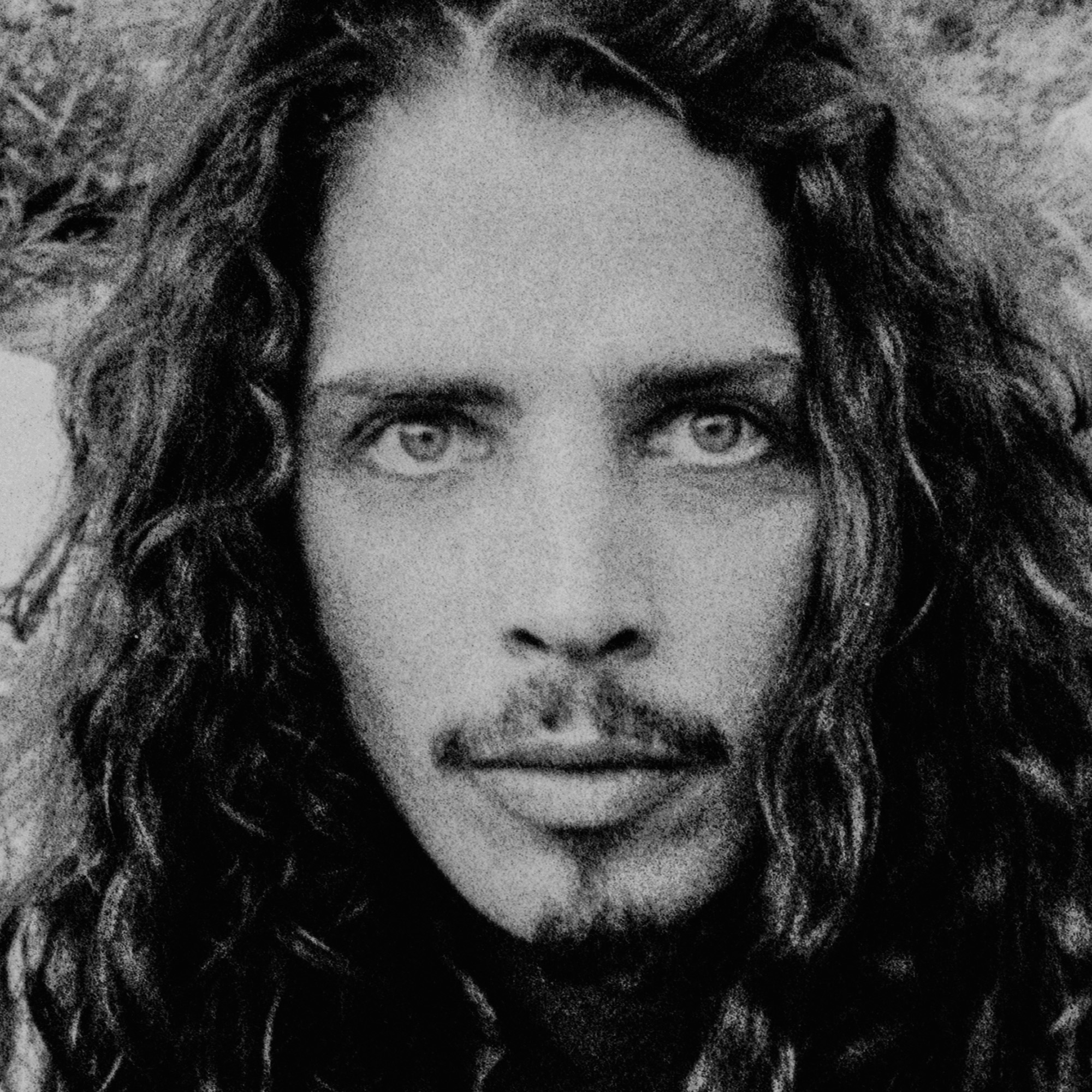
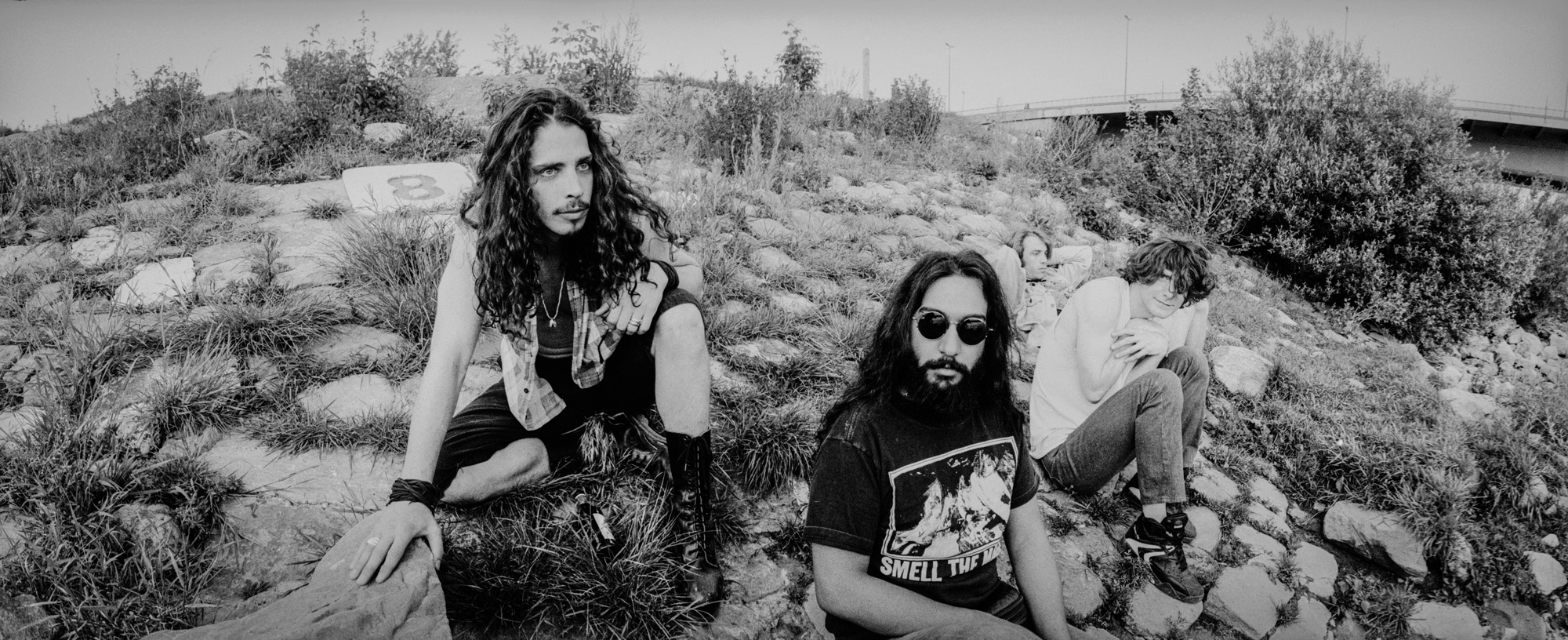
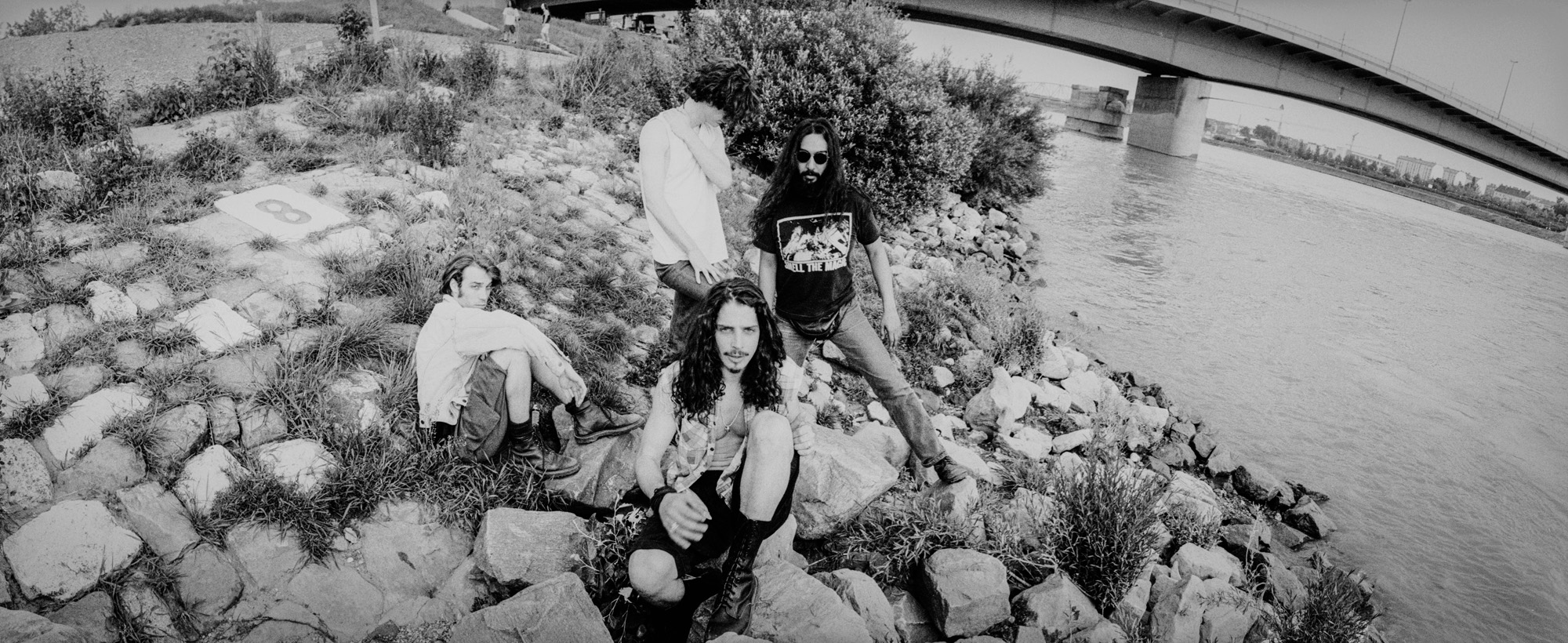
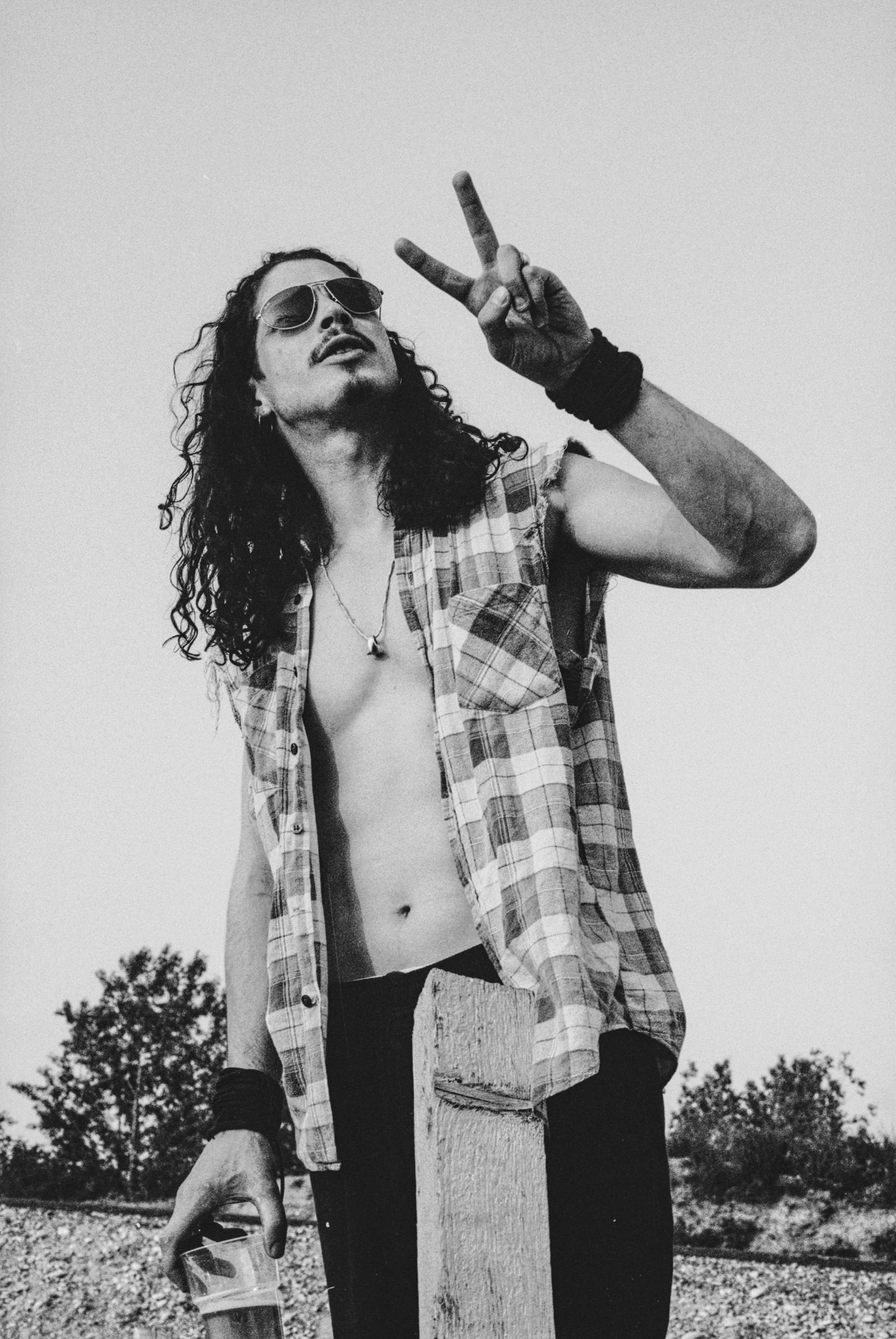
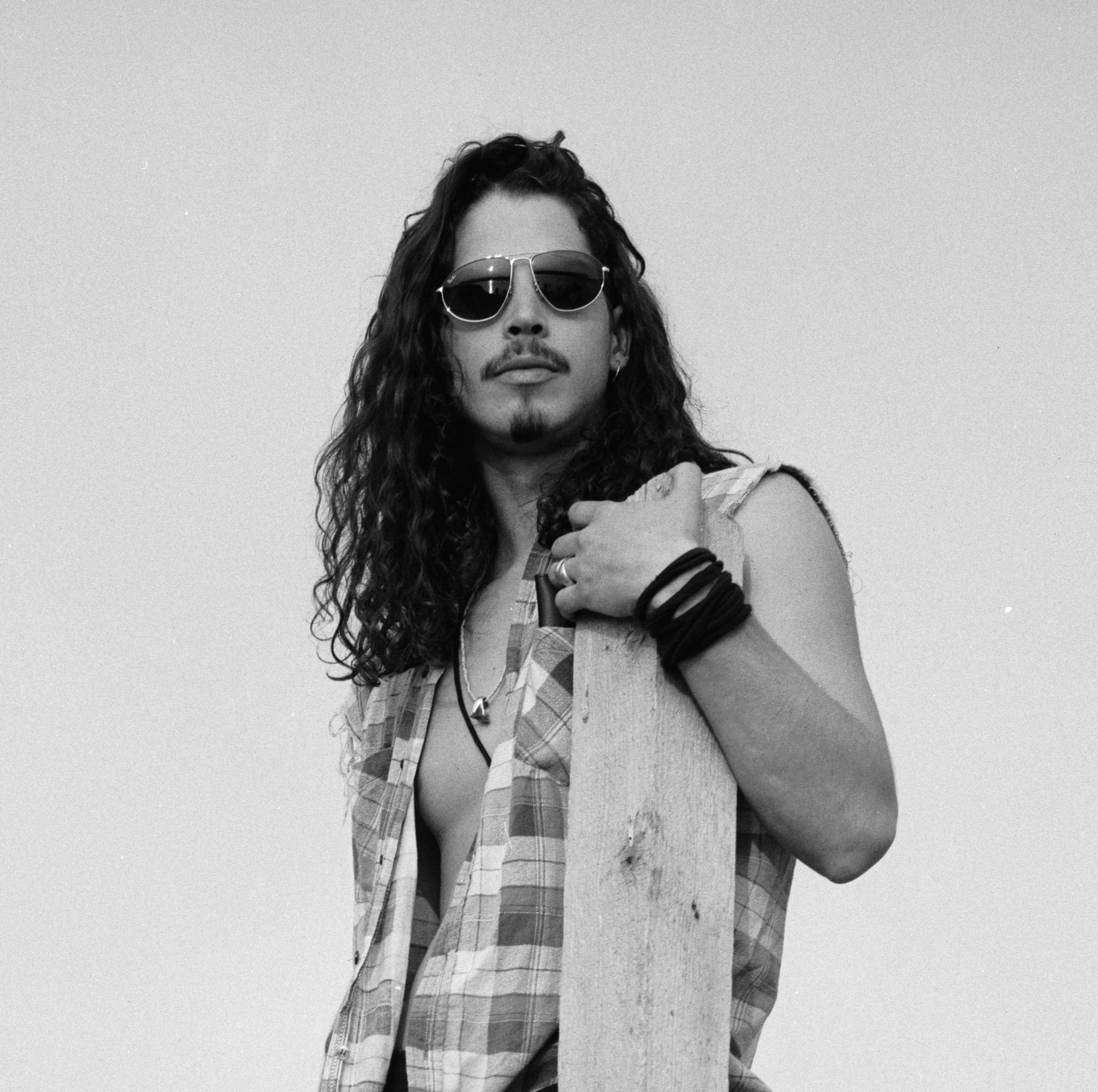
It was a great atmosphere. The band were relaxed and at ease with each other and with me. They were hitting their stride musically and as a team, and this really comes across in the combination of confidence and energy and strength in the pictures.
4. We noticed on your Instagram that you have recently begun going over your older work during the grunge era with various Sub Pop artists (from Kurt to TAD, and more), do you have any memories or experiences from those shoots that stand out to you?
All the Sub-Pop pictures happened over one week when I flew out to Seattle with Everett True to do a feature on the label. It came about because Bruce Pavitt at Sub Pop had figured out that he needed to get a British music paper to write about Sub Pop if he wanted to get attention in the US. He knew Everett was interested in the Sub Pop bands, so he blew his entire (very small) marketing budget on paying for our flights to Seattle. Once we got there, they didn’t have enough money left to pay for hotels, so we had to sleep on the floor in one of the band’s house. We did interviews and shoots every day, and live concerts every night. Drank a lot of coffee and Mexican beer. Partied all over Seattle. The big story that came out of the trip coined the expression “The Seattle Scene” and got the label and the town a huge amount of media and industry attention.
5. Tell us a little bit about your gear and favorite lenses and what you think about the progression of photography since it has entered the digital realm.
For the Soundgarden shoot I was using a Canon F1nAE, a Canon T90, a Rolleiflex 2.8 80mm Planar, and a Panon Widelux panoramic camera. With the Canons, I would use mainly 28mm, 35mm, 50mm, 85mm, and 70-210mm FD lenses. These are all manual focus, and I would mainly use manual exposure as well. All except the T90 are mechanical cameras that do not rely on electronics for control. This is important, because it makes them more predictable.
With a mechanical camera, when you press the shutter the delay before the picture is taken is always exactly the same. Over time, you learn to know this delay, and you press the shutter slightly before the point you anticipate the picture. A bit like somebody trying to shoot a bird has to aim ahead of it.
With modern digital cameras, the time between pressing the shutter and the picture being taken is always different. There are delays while the autofocus works, the exposure is calculated, the various settings are applied, and these are different from one exposure to the next, so you can never learn the time delay and work with it. This makes the process of photographing far less precise with modern cameras. The designers try to get round this by building cameras that shoot faster and faster, capturing sequences of frames in the hope that one will be good. But however fast they shoot there is enough time for the blink of an eye between each frame and the next, and the blink of an eye is a long time.
There is something special about shooting on film. You always know that the piece of film has a permanent direct connection to the subject. It was recorded with the light coming directly off them, exactly as it was, and you can always go back to that. Digital is removed from that; the image is being modified and manipulated from the moment it is recorded. You end up with multiple copies and versions of the original file, and you never know how much it has been changed or adjusted. It loses it’s pure connection to the subject.
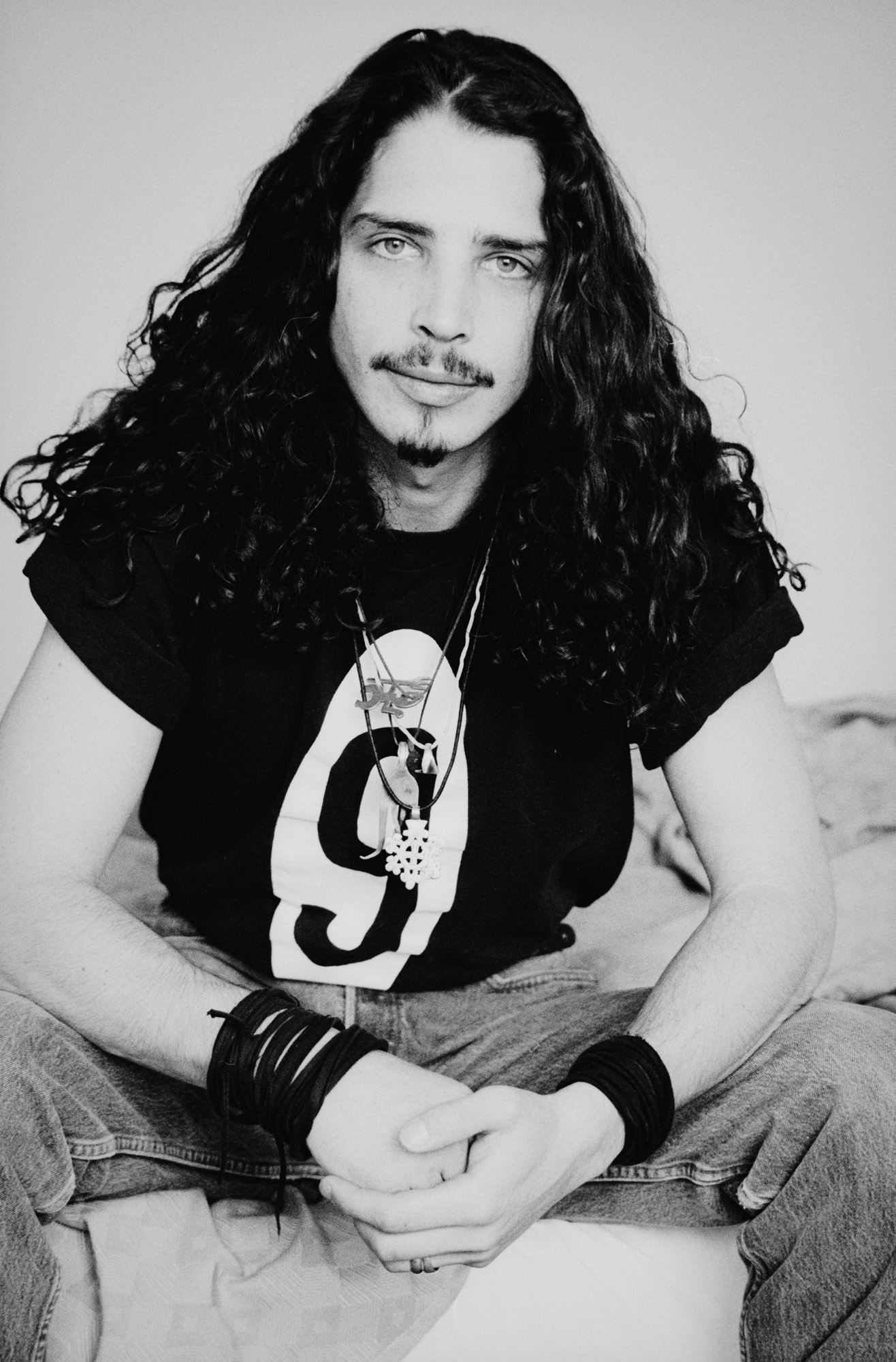
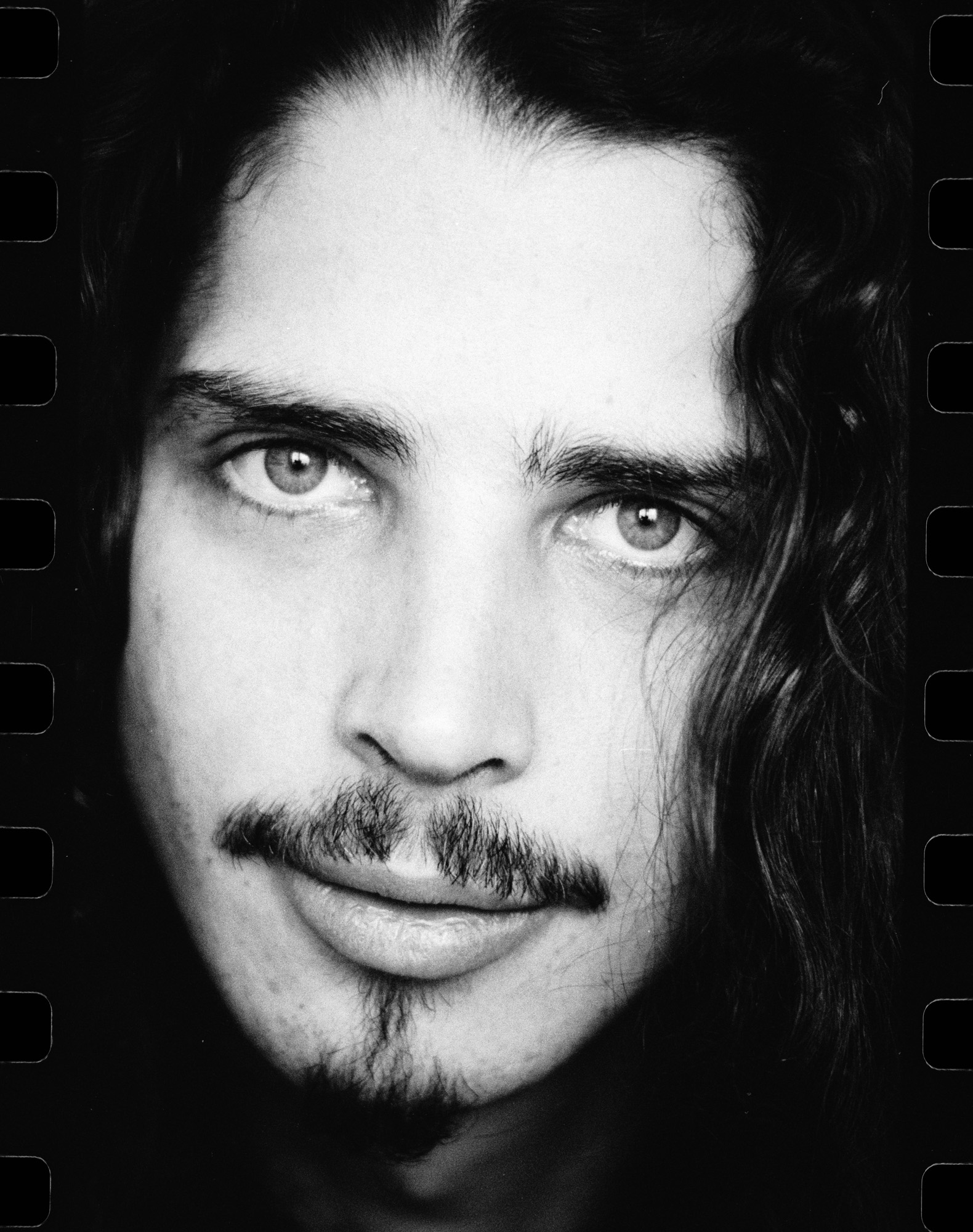
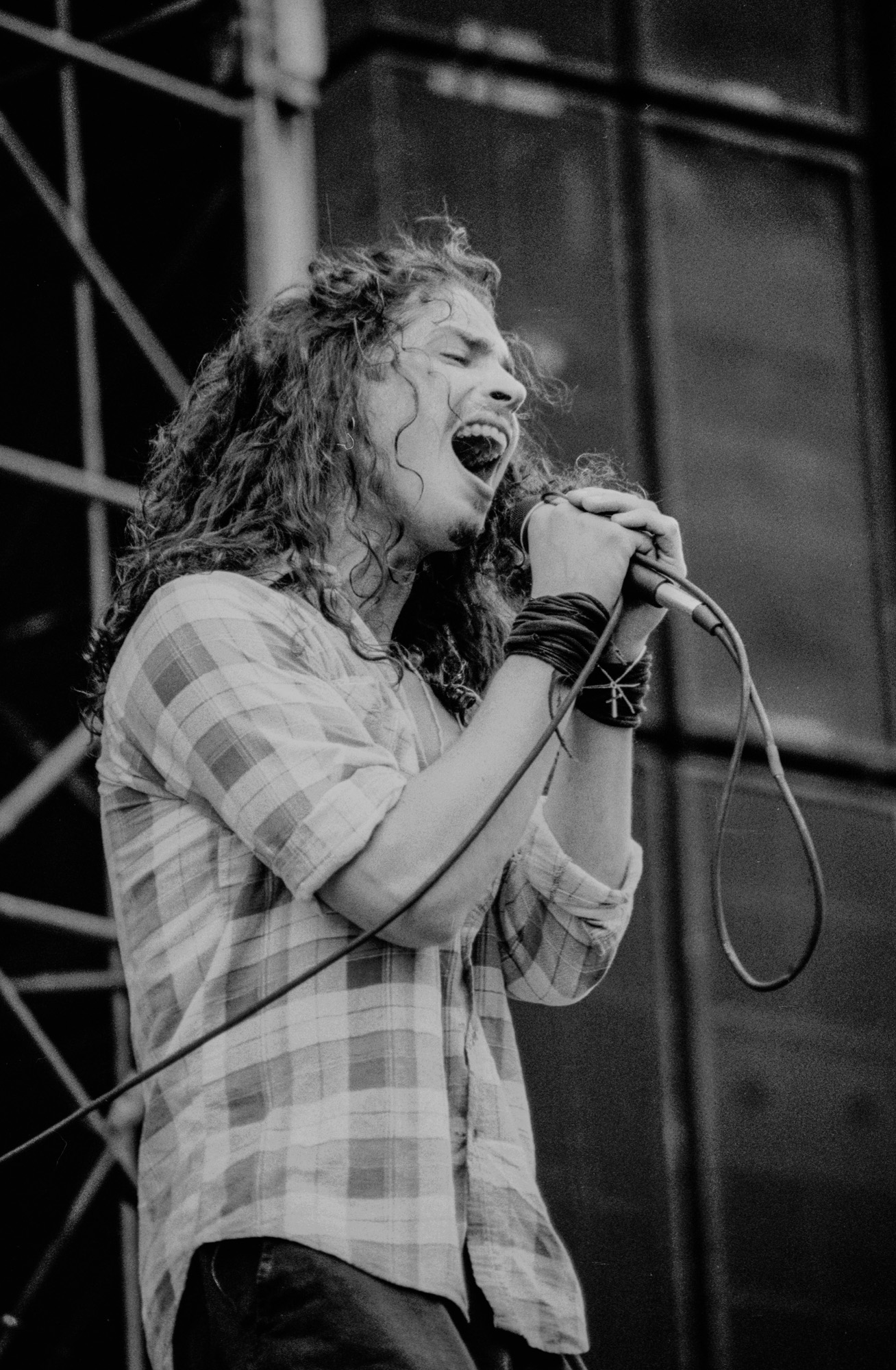
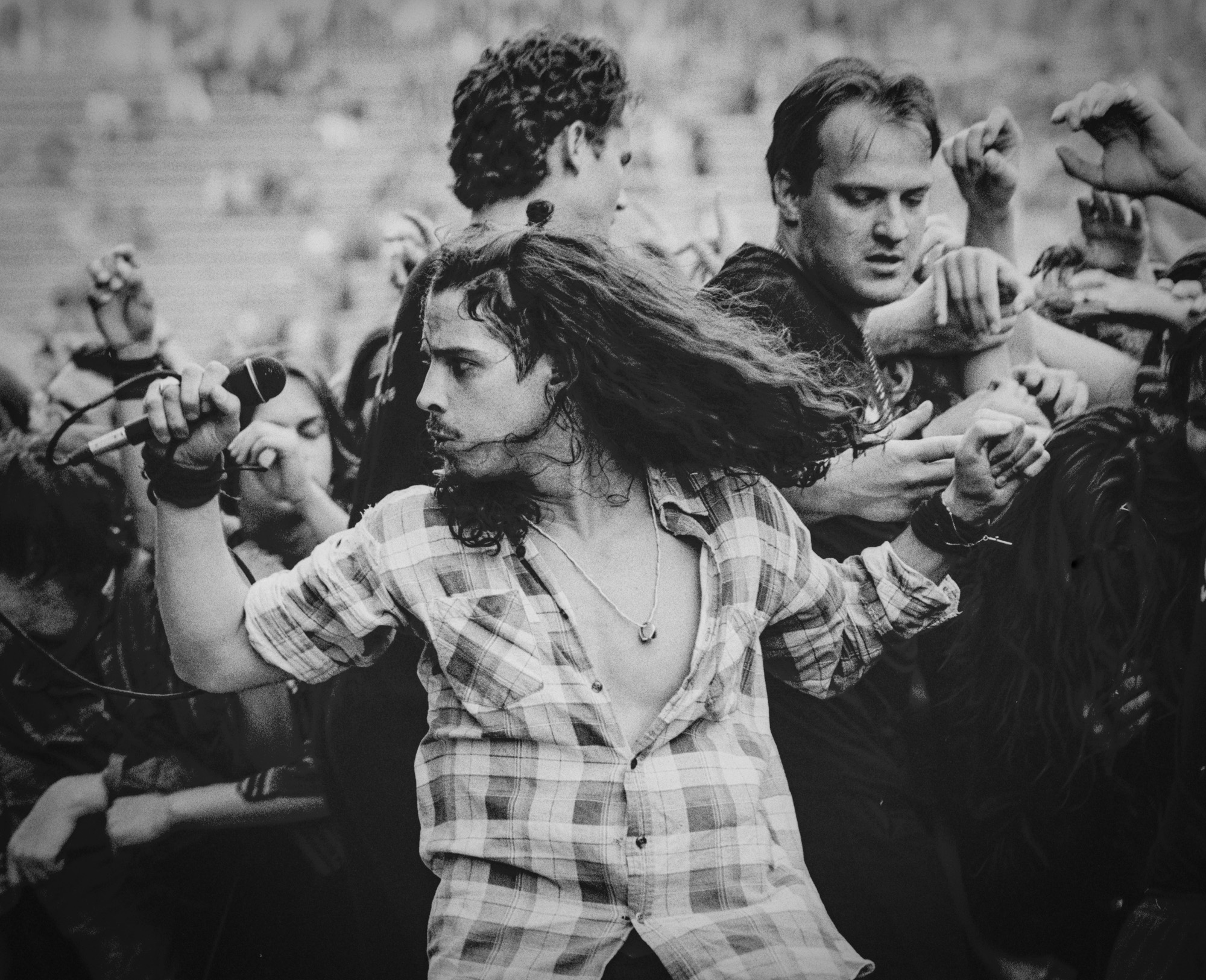
6. You’ve worked with many world-renown music acts, has music been a source of inspiration in your work? What continues to inspire you?
Music has always inspired me. People inspire me. I have always been fascinated by the act of photographing people, and interacting with them in that context. Looking for who they are and the feeling that you get from the expression on a face.
7. Do you have any words of wisdom for aspiring photographers who want to work in the music industry?
Start by wanting to take great pictures, not wanting to work in the music industry.
A big thank you to the incredibly eloquent and talented Andrew Catlin for taking the time out to answer some of our questions so thoughtfully. We hope to see more from Andrew as he continues to bless us with snippets from his archives, as well as new projects he is involved with. Be sure to keep up with him on his Instagram page where he frequently posts his work.
©Andrew Catlin Photography
· The Diorama (London) - Last Few Days
· National Portrait Gallery (London) Collection
· Live Aid Exhibition (London) (1985)
· L'Escargot (London)[8]
· Electro Gallery (St. Leonards)
· Schwules Museum (Berlin)
· SoCo Gallery (Hastings)
· British Council Touring Exhibition (international)
· NME (London)
· National Portrait Gallery (London) - She Bop (2003)
· Paul Smith Collection (London)
· National Portrait Gallery (London) - Benjamin's Britain (2006)
· National Portrait Gallery (London) - Four Corners (2007)
· The Enterprise (London) (2009)
· F-ish Gallery (Hastings) (2011)
· Bodelwyddan Castle - Made in 1988 Exhibition (2013)
· Lucy Bell Gallery (2013)
· Trinity 7 Gallery (Hastings) (2014)
· The Gallery (Liverpool) - Marc Almond: Addicted to Excess (2017)
· Beningbrough Hall (York) - Making Her Mark (2017)
· Lucy Bell Gallery - Contact Sheets (2018)
Book Credits:
· Live Aid: The Official Book (1985), paperback
· King Ink by Nick Cave (1988), hardcover
· Bryan Adams by Bryan Adams and Andrew Catlin (1995), editions: hardcover, paperback
· A Drink with Shane MacGowan (paperback & hardback) by Shane MacGowan (author), Victoria Mary Clarke (2005), editions: hardcover, paperback
· Pogue Mahone Kiss My Arse: The Story of the Pogues (hardcover) by Carol Clerk (2007), editions: hardcover, paperback
· It Crawled from the South: An R.E.M. Companion by Marcus Gray, editions: hardcover, paperback
· Nick Cave by Maximilian Dax (1999), hardcover
· They're Not Laughing Now by Alexander Brattell and Andrew Catlin (2010), editions: hardcover
· Vel by Andrew Catlin, Susheela Raman and Sam Mills (2011), editions: hardcover
· The Jesus and Mary Chain, by Andrew Catlin, Jim Reid and Julie Reid (2012), editions: hardcover
· Here Comes Everybody: The Story of the Pogues, by James Fearnley (2014), editions: softcover
· Marc Almond's Visual Tome, by Ian David Monroe (2014), editions: hardcover
· Marc Almond - Trials of Eyeliner, by Alex Petridis (2016), editions: hardcover
· Sinéad O'Connor 48, by Andrew Catlin (2017), editions: hardcover
· Shane MacGowan Threescore, by Andrew Catlin (2018), editions: hardcover
Music Video Director of Photography Credits:
· David Holmes: "69 Police" (2000)
· Medal: ‘Porno Song’ (1999)
· Medal: ‘Up Here For Hours’ (1999)
· Delakota: '555' (1998)
· Delakota: 'C’mon Cincinnati' (1998)
· Ether: ‘Best Friend’ (1999)
· Satellite Beach: ‘Psycho’ (1998)
· Ether: ‘She Could Fly’ (1998)
· Iron Maiden: 'The Angel & The Gambler' (1998)
· Radiator: ‘I Am’ (1997)
· Ether: ‘If You If Really Want To Know’ (1997)
· Naimee Coleman: 'Care About You' (1996)
· Eternal: 'Secrets' (1996)
· Planet Claire: ‘Say’ (1996)
· Planet Claire: ‘21’ (1996)
· World Domination Enterprises: 'Company News' (1988)
· World Domination Enterprises: 'Can't Live Without My Radio' (1988)
· That Petrol Emotion: 'Detonate' (1993)
· Ed Harcourt: 'Black Feathers' (2009)
· William Orbit: 'Hello Waveforms' (2006)
· Princess Diana Tribute: 'We Are the World' (1997)
Music Videos Director Credit
· Aref Durvesh: 'Outerindia One' (dir/DOP: Andrew Catlin) (2009)
· Susheela Raman: 'Ganapati' (dir/DOP: Andrew Catlin) (2001)
· Susheela Raman: 'Salt Rain' (dir/DOP: Andrew Catlin) (2001)
· Susheela Raman: 'Maya' (dir/DOP: Andrew Catlin) (2002)
· Susheela Raman: 'Orphea' (dir/DOP: Andrew Catlin) (2010)
· Susheela Raman: 'Tomorrow Never Knows' (dir/DOP: Andrew Catlin) (2016)
· Susheela Raman: 'Annabel' (dir/DOP: Andrew Catlin) (2018)
· Susheela Raman: 'Tanpa Nama' (dir/DOP: Andrew Catlin) (2018)
· Doros Quartet: 'Cherubim' (dir/DOP: Andrew Catlin) (2015)
· Deacon Blue: 'Love and Regret' (dir/DOP: Andrew Catlin) (1989)
· Pogues: 'Rainy Night in Soho' (dir/DOP: Andrew Catlin) (1991)
· Kinky Machine: 'Supernatural Giver' (dir: Andrew Catlin) (1992)
· FIN: "Sweet Obsession" (dir: Andrew Catlin) (1992)
· Pooka: "City Sick" (dir: Andrew Catlin) (1993)
· Scalaland: ‘Snow White Lies’ (dir/DOP: Andrew Catlin) (1995)
· Scalaland: ‘Call Me’ (dir/DOP: Andrew Catlin) (1995)
· Bryan Adams: 'Please Forgive Me' (dir: Andrew Catlin) (1993)
· Bryan Adams: 'Straight from the Heart '(5 screen version) (dir: Andrew Catlin) (1993)
· Bryan Adams: 'Summer of '69' (Live) (dir: Andrew Catlin) (1993)
· Bryan Adams: 'Run To You' (Live) (dir: Andrew Catlin) (1992)
· Bryan Adams: 'Into the Fire' (dir/DOP: Andrew Catlin) (1988)
· Bryan Adams: 'When the Night Comes' (dir: Andrew Catlin) (1993)
· Bryan Adams: 'Cmon Everybody' (dir: Andrew Catlin) (1993)
· Bryan Adams: 'Let's Make a Night to Remember' (dir: Andrew Catlin) (1996)
· C.C.: 'All Right' (dir/DOP: Andrew Catlin) (1995)
· C.C.: 'Beautiful' (dir/DOP: Andrew Catlin) (1995)
· C.C. 'Shelter' (dir/DOP: Andrew Catlin) (1995)
· C.C.: 'Roots Scared' (dir/DOP: Andrew Catlin) (1995)
· Linda Eder 'From This Moment On' (dir/DOP: Andrew Catlin) (1989)
· Cowboy Junkies: 'Blue Moon' (dir/DOP: Andrew Catlin) (1988)
· Green on Red 'The Quarter' (dir/DOP: Andrew Catlin) (1989)
· Green on Red 'Little Things' (dir/DOP: Andrew Catlin) (1989)
· Green on Red 'Arrested' (dir/DOP: Andrew Catlin) (1989)
Music longforms / concerts
· Bryan Adams: ‘When The Night Comes’ (Live) (dir: Andrew Catlin)
· Susheela Raman: ‘The Queen Elizabeth Hall’ (Live) 2012 (dir: Andrew Catlin)
· Susheela Raman: ‘Barbican’ (Live) 2017 (dir: Andrew Catlin)
Films and documentaries: Directing Credits
· Bryan Adams: Waking Up the World CBC Documentary (1993) (dir: Andrew Catlin)
· Bryan Adams: Waking Up The World DVD Release (2003) (dir: Andrew Catlin)
Films and documentaries: Director of Photography Credits
· Elements of Mine:[9] (dir: Khaled El Hagar/Norbert Servos)
Winner First Prize – Moving Pictures Festival, Toronto (MoPix Award 2004)
· Gumball 3000:[10] documentary of First European rally/race. (1999) (dir. Simon Hilton)
| Title | Artist | Year | Comment |
|---|---|---|---|
| 18 Til I Die | Bryan Adams | 1999 | Photography |
| So Far So Good | Bryan Adams | 1993 | Photography |
| Please Forgive Me | Bryan Adams | 1993 | Photography |
| All I Want is You | Bryan Adams | 1991 | Photography |
| Waking Up the Neighbours | Bryan Adams | 1991 | Photography |
| 20th Century Masters: The Millennium Collection: Best Of Joan Armatrading | Joan Armatrading | 2000 | Photography |
| Happiness | Lisa Germano | 1993 | Photography |
| 25: The Greatest Hits [CD/DVD] | Simply Red | 2008 | Photography |
| 25: The Greatest Hits [Single Disc] | Simply Red | 2009 | Photography |
| 331⁄3 | Susheela Raman | 2007 | Art Direction, Photography |
| Actually | Pet Shop Boys | 2001 | Photography |
| Anthology | Bryan Adams | 2005 | Photography |
| Anthology [2007] | Bryan Adams | 2007 | Photography |
| Automatic | The Jesus and Mary Chain | 1989 | Photography, Portraits |
| Automatic [DualDisc] | The Jesus and Mary Chain | 2006 | Portraits |
| Babi Yar/Drill FACT 266 | Steve Martland | 1989 | Photography |
| Balinese Dancer | Chuck Prophet | 1993 | Photography |
| Barbed Wire Kisses | The Jesus and Mary Chain | 1988 | Photography |
| The Best of Aztec Camera | Aztec Camera | 2001 | Photography |
| The Best of Nick Cave & the Bad Seeds | Nick Cave | 1998 | Photography |
| The Best of Nick Cave & the Bad Seeds [Bonus CD] | Nick Cave | 2001 | Photography |
| Big Blue Ball | Big Blue Ball | 2008 | Photography |
| Big Cock | King Kurt | 1986 | Photography |
| The Brit Box: UK Indie, Shoegaze, and Brit-Pop Gems of the Last Millennium | Various Artists | 2007 | Photography |
| Brother Aldo | Chuck Prophet | 1990 | Design, Photography |
| Burnin' the Ice | Die Haut | 1983 | Photography |
| Campfire Songs: The Popular, Obscure and Unknown Recordings of 10,000 Maniacs | 10,000 Maniacs | 2004 | Photography |
| Capital Letters: The Best of Ruefrex | Ruefrex | 2005 | Photography |
| Chains Changed | Throwing Muses | 1987 | Photography |
| Cleaner Light | Kristin Hersh | 1999 | Portraits |
| Collection, Pt. 2 | Christy Moore | 1997 | Photography |
| Coming Home | Yungchen Lhamo | 1998 | Photography |
| Complete Studio Albums Box | Sugarcubes | 2006 | Photography |
| Crock of Gold | Shane MacGowan | 1997 | Photography |
| Church of the Holy Spook | Shane MacGowan | 1994 | Photography/Design |
| That Woman's Got Me Drinking | Shane MacGowan | 1994 | Photography/Design |
| Love | The Cult | 2009 | Photography |
| Darklands | The Jesus and Mary Chain | 1987 | Photography |
| Stories of Johnny | Marc Almond | 1985 | Photography |
| Don Juan Demarco [Soundtrack] | Various Artists | 1995 | Photography |
| End of the Millennium Psychosis Blues | That Petrol Emotion | 1988 | Photography |
| Essential Pogues | The Pogues | 1991 | Photography |
| Fairytale of New York | The Pogues | 2012 | Photography |
| Sally Maclennane | The Pogues | 1985 | Photography |
| Final Flame | That Petrol Emotion | 2000 | Photography/Art Direction |
| First of a Million Kisses/Ay Fond Kiss/Mirmama | Fairground Attraction | 2002 | Cover Photo |
| Forbidden City | Electronic | 1996 | Photography |
| George Best | The Wedding Present | 1987 | Photography |
| George Best Plus [George Best Plus] | The Wedding Present | 1997 | Photography |
| Griller | Ut | 1989 | Photography |
| Here Today, Tomorrow | The Sugarcubes | 1989 | Photography |
| Hips and Makers | Kristin Hersh | 1994 | Photography |
| Hips and Makers | Your Ghost | 1993 | Photography |
| Hollywood Town Hall | The Jayhawks | 1992 | Photography |
| Waiting for the Sun | The Jayhawks | 1992 | Photography |
| Honey's Dead | The Jesus and Mary Chain | 1992 | Photography |
| Inconsiderate Bitch | Lisa Germano | 1994 | Photography |
| Into the Blues | Joan Armatrading | 2007 | Photography |
| Islands | Mike Oldfield | 1987 | Photography |
| It Was the Best of Times | Supertramp | 1999 | Photography |
| Just Like Everybody [LTM] | 23 Skidoo | 2008 | Photography |
| Just Say Anything | Just Say Yes | 1991 | Photography |
| La Candela Viva | Totó La Momposina | 1993 | Photography |
| Live 1987 | The Wedding Present | 2007 | Photography |
| Live Aid [DVD Boxed Set] | Various Artists | 2004 | Photography |
| Live! Live! Live! | Bryan Adams | 1995 | Photography |
| Lonely, Cryin', Only [#1] | Therapy? | 1998 | Photography |
| Love Bites & Bruises: Wonder Stuff Anthology | The Wonder Stuff | 2001 | Photography |
| The Lost Are Found | Claudia Brücken | 2012 | Photography |
| Love Trap | Susheela Raman | 2003 | Photography |
| Vel | Susheela Raman | 2010 | Photography & Design |
| Ghost Gamelan | Susheela Raman | 2018 | Photography & Design |
| Lovelife | Lush | 1996 | Portraits |
| Lovesongs for Underdogs | Tanya Donelly | 1997 | Photography |
| Lovesongs for Underdogs [Japan] | Tanya Donelly | 1998 | Photography |
| Merge | Arthur Baker | 1989 | Photography |
| Mirmama | Eddi Reader | 1991 | Photography |
| Mysterio | Ian McCulloch | 1992 | Photography |
| Never Loved Elvis | The Wonder Stuff | 1991 | Photography |
| Never Loved Elvis [Bonus Tracks] | The Wonder Stuff | 2000 | Photography |
| Patrol | Steve Martland | 1994 | Photography |
| Picture Book [Bonus DVD] | Simply Red | 2008 | Photography |
| Please/Further Listening 1984–1986 [Bonus CD] | Pet Shop Boys | 2001 | Photography |
| The Power of Negative Thinking: B-Sides & Rarities | The Jesus and Mary Chain | 2007 | Photography |
| Blues from a Gun | The Jesus and Mary Chain | 1989 | Photography |
| Teethgrinder | Therapy? | 1992 | Photography |
| Nurse | Therapy? | 1992 | Photography |
| Semi-Detached | Therapy? | 1998 | Photography |
| Sidewalking | The Jesus and Mary Chain | 1988 | Photography |
| Automatic | The Jesus and Mary Chain | 1989 | Photography |
| POWER TO THE PEOPLE AND THE BEATS – Public Enemy's Greatest Hits [Edited Version] | Public Enemy | 2005 | Photography |
| Power to the People and the Beats – Public Enemy's Greatest Hits [Explicit Version] | Public Enemy | 2005 | Photography |
| Pretty Deep [#1] | Tanya Donelly | 1997 | Photography |
| Pretty Deep [#2] | Tanya Donelly | 1997 | Photography |
| Provision | Scritti Politti | 1988 | Photography |
| Real Sugar | Paban Das Baul | 1997 | Photography |
| Retro | New Order | 2002 | Photography |
| Retro [Bonus CD] | New Order | 2002 | Photography |
| Ricks Road | Texas | 1993 | Photography |
| Rum Sodomy & The Lash [Expanded] [Bonus Tracks] | The Pogues | 2005 | Photography |
| Salt Rain | Susheela Raman | 2001 | Photography |
| The Same Sky | Horse | 1990 | Cover Photo |
| Saturday Morning: Cartoons' Greatest Hits | Various Artists | 1995 | Photography |
| Semi-Detached [Bonus Tracks] | Therapy? | 2000 | Photography |
| Seven Songs [LTM] | 23 Skidoo | 2008 | Images |
| The Culling is Coming | 23 Skidoo | 1983 | Photography |
| Sharks Patrol These Waters | Various Artists | 1995 | Photography |
| The Shouting Stage | Joan Armatrading | 1988 | Photography |
| Sky Motel | Kristin Hersh | 1999 | Portraits |
| Slave to Love: Best of the Ballads | Bryan Ferry | 2000 | Cover Photo |
| Slave to Love: Best of the Ballads [Japan] | Bryan Ferry | 2000 | Cover Photo |
| Square the Circle | Joan Armatrading | 1992 | Photography |
| Still Burning | Mike Scott | 1997 | Photography |
| The Snake | Shane MacGowan | 1995 | Photography/Art Direction |
| The Snake [Bonus Track] | Shane MacGowan | 2000 | Photography |
| So Far So Good | Bryan Adams | 1993 | Photography/Art Direction |
| The Sound of the Smiths [Deluxe Edition] | The Smiths | 2008 | Photography |
| Sounds of the Eighties: 1986 | Various Artists | 1994 | Photography |
| Tommy (1985–1987) | The Wedding Present | 1988 | Photography |
| The Culling Is Coming | 23 Skidoo | 1983 | Photography |
| Language | 23 Skidoo | 1984 | Photography |
| Trilogy | The Pogues | 2006 | Photography |
| The Very Best of Echo & the Bunnymen: More Songs to Learn and Sing [CD/DVD] | Echo & the Bunnymen | 2007 | Photography |
| Volume Two [World's End Ltd.] | Various Artists | 1991 | Photography |
| Voyage | Christy Moore | 1989 | Photography |
| Wave of Mutilation: Best Of Pixies | Pixies | 2004 | Photography |
| All Shall Be Well | Virginia Astley | 1992 | Photography |
| Had I The Heavens | Virginia Astley | 1996 | Photography |
| Way Down Below Buffalo Hell | Way Down Below Buffalo... | 1993 | Photography |
| A Week or Two in the Real World | Various Artists | 1995 | Photography |
| Wildest Dreams | Tina Turner | 1996 | Photography |
| The Stars We Are | Marc Almond | 2002 | Photography |
| Sweet Ride | Belly | 2002 | Photography |
| This Is It | Faith No More | 2003 | Photography |
| Nurse | Therapy | 1992 | Photography |
| Teethgrinder | Therapy | 1992 | Photography |
| Bryan Adams Wembley 1996 | Bryan Adams | 2016 | Photography |
| The First Kiss of Love | Cronin | 2016 | Photography |
| Tomorrow Never Knows | Susheela Raman | 2016 | Photography |
| The Queen Between | Susheela Raman | 2014 | Photography |
| The Sound of the Smiths | The Smiths | 2008 | Photography |
| Bring the Noise/Sophisticated | Public Enemy | 1988 | Photography |









